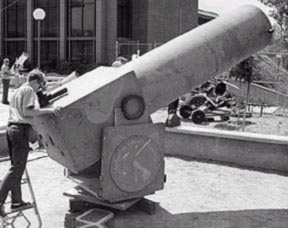XT10
Out of the box, you’ll be able to see the rings of Saturn, the polar cap on Mars, even the blue of Neptune. But perhaps most importantly, the Orion XT10 is designed for deep sky objects such as the Crab Nebula or the Pleides.
In our opinion, it’s well worth starting with the XT10 rather than one of the smaller dobsonians such as the XT8 or XT6. The clarity that comes from this 10” telescope simply raises the enjoyment levels.
Telescope Comparison
Compare Telescopes & Brands
To begin this review, let’s place the telescope within the Orion Skyquest product range. Orion makes a variety of dobsonian style telescopes from the waist leveled XT3.5 all the way up to the massive XX14 (which is realistically too big to store in your house—keep it in the shed).
Sometimes simple logistics are important and we figure the XT10 is a great dobsonian telescope to start with because of its size. It’s not too big that you can’t store it in a backroom or basement and it’s still big enough to give you a ‘wow’ experience when tracking the sky. You can also pack the XT10 in your car. It might be a tight fit if you’re driving a Ford Focus, but it’ll make it.
Let’s compare the XT10 with other telescope brands. If you’re on this site, you’ve probably done some shopping around on Amazon already comparing prices. And you’ve also probably discovered this line of telescopes is cheap!
There’s a reason for this. Orion’s business philosophy seems to be kind of similar to Hyundai’s. The idea is that the consumer shouldn’t have to pay big bucks for a high quality product. Hyundai brought the luxury experience to the average consumer and so has Orion Skyquest.
The thing is this. No matter how great these products get, there’s always going to be a market for the high-end stuff. Just as an Infinity will smoke a Kia, a Meade will bury an Orion Skyquest. The luxury options are in a very real way better products. But you pay for that advantage. And you pay a lot!
For example, The Orion XT10 is around $600. Now this is a telescope with a 10” diameter and it stands almost as tall as a full grown man. An 8” Meade Light Switch telescope (which you can carry under your arm) will go for around $2300. Is the Meade a better telescope? Yes. Even though it has a smaller diameter (and certainly a tiny body by comparison), the quality of the image you’ll see with the Meade will outshine that of the Orion SkyQuest.
But guess what. Just as a Lambourgini will have a bigger wow factor than an Infiniti, there are telescopes out there that can run laps around the Meade 8. When you buy a telescope, you have to think about your budget and the XT10 is a solid starter telescope for the money. And you’ll never have to feel embarrassed bringing it out in public!
Dobsonian Design
Dobsonian Telescope History
Now moving on to the design. With the XT10, you benefit from literally hundreds of years of study and refinement when it comes to this style of telescope.
First invented by Newton (in the 1600s), the actual ‘dobsonian’ design wasn’t codified until the 1960s by an amateur astronomer, John Dobson. The basic idea was to take a canon’s mount and do the same to a telescope. John Dobson’s amateur telescopes were light-weight and inexpensive to produce. The dobsonian quickly became an alternative for amateur astronomers.
Telescope companies picked up on the trend and the idea started to proliferate. The first company to invest in the design was Coulter Optical (now defunct) which popularized an 8” dobsonian in the 1980s. It wasn’t until the late 1990s that other companies really took an interest such as Meade and Orion.
For the larger diamerter telescopes, a traditional dobsonian was found to be too unruly. It was difficult to store and even more of a challenge to transport. So what was called the ‘truss’ telescope was born (first manufactured in 1989). This is essentially a dobsonian tube broken up in two parts which are then connected with collapsible bars. The ‘truss’ is the next step up from the XT10.





Pingback: Orion SkyQuest XT10 Classic Dobsonian Telescope Review « Orion Skyquest Telescope Reviews